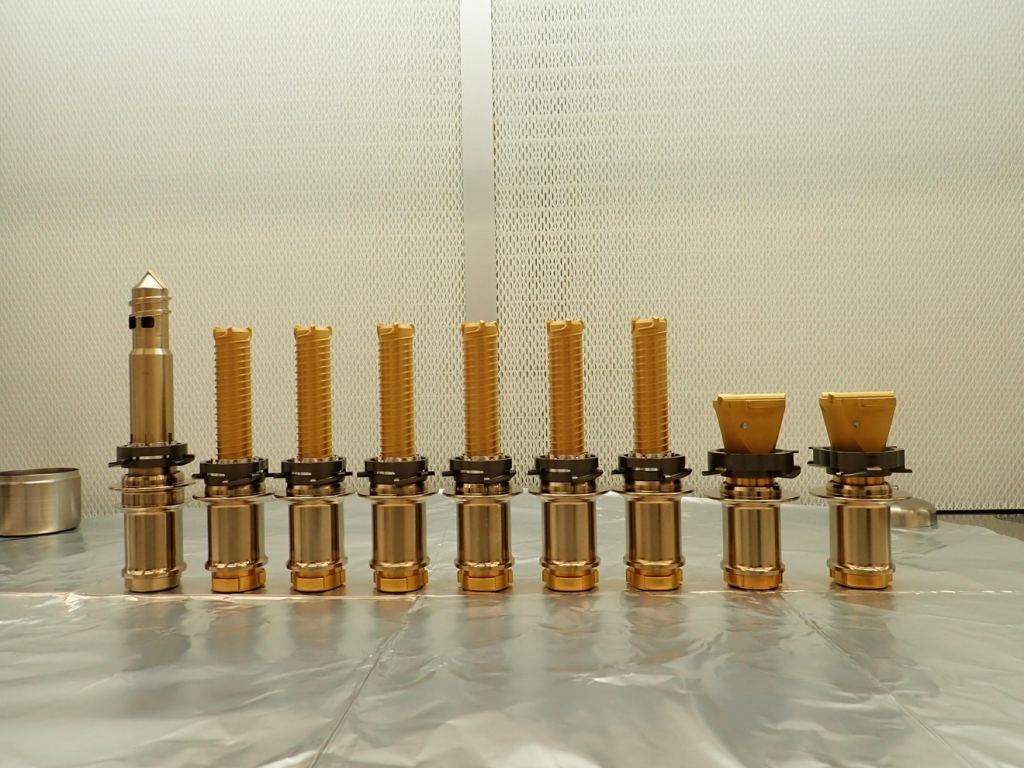The Mars Sample Return (MSR) part of Perseverance’s mission is picking up – literally. For the past few months, the rover has concentrated on picking up samples that will eventually be returned to Earth as part of the future Mars Sample Return mission. Back on Earth, plenty of advanced technologies can poke and prod the samples in ways that would never be feasible to launch with a spacecraft. However, if scientists decide to poke or prod Perseverance’s latest collections, they might have a hard time because they are made of regular regolith.
Regolith, the ever-present layer of dust on the Martian surface, is integral to our understanding of how the Martian surface has formed over the eons and what can be done to mitigate its effects on it our exploration systems. It is notorious for being the cause of the end of mission for such beloved rovers as Spirit and Opportunity, whether by entrapping one of them in an inescapable morass or shrouding their solar cells in a layer of dust such that only limited sunlight can penetrate through it.
From a scientific perspective, regolith is interesting because it would allow geologists to better understand the evolution of the Martian climate. One of Perseverance’s primary missions is astrobiology, and regolith might hold clues to what exactly was going on back when Mars was warmer and wetter. Even with it being ubiquitous throughout the planet, the best instruments we have so far been able to send there pale in comparison to the technical scrutiny brought to bear on the sample once it has been returned to Earth.
From an engineering perspective, regolith, which makes up almost all of the dust in the Martian atmosphere, presents a set of difficult challenges. Anakin Skywalker’s axiom about sand in Star Wars holds a grain of truth in it, as it can be coarse and irritating and gets everywhere. The same goes for Martian regolith. It is notorious for sticking to everything, including, potentially, spacesuits and, even more dangerously, the inside of an astronaut’s lungs.
If it even gets into an astronaut’s lungs, it’s dangerous for more than just its abrasiveness. Regolith contains perchlorates, which are potentially deadly toxins to any life that might try to eek by an existence on the Red Planet. Understanding how to mitigate the effects of this dangerous substance might literally prove to be life or death for the first Martian colonists.
All of those are good reasons for Perseverance to be interested in it, and, as such, the rover recently collected two samples using its specialized regolith bit. This bit differs from its standard rock drilling and abrasion bits, as it looks like a “spike with small holes” in it, according to a JPL press release. Though it might look relatively simplistic, it was developed with thousands of hours of engineering and testing with simulated Martian regolith.

Credit – NASA / JPL-Caltech
Unfortunately, there are limitations to the MSR, especially in terms of payload capacity. Therefore, only one of the two regolith samples Perseverance recently collected will be making its way back to Earth. Even then, it will be the better part of a decade before it makes its way back, as the second stage of the MSR process is still in the planning phases.
The other sample will be spending the rest of its days as part of an artifact from the early era of humanity’s exploration of Mars. Perseverance certainly already deserves its place in that pantheon, no matter what sample it decides to send back.
Learn More:
NASA – NASA’s Perseverance Rover Gets the Dirt on Mars
UT – Samples Returned From Mars Will be Protected by a Micrometeorite Shield
UT – This is Where the Mars Sample Return Mission Could be Landing
UT – The First Crops on Mars Should be Alfalfa and Cyanobacteria. Then Comes Tastier Plants
Lead Image:
Two holes from the regolith drill samples that Perseverance took on December 2nd and 6th.
Credit – NASA / JPL-Caltech
The post Perseverance’s Latest Sample is Just Crumbled Regolith. When Scientists get Their Hands on it, we’ll Learn so Much About how to Live on Mars appeared first on Universe Today.
No comments:
Post a Comment